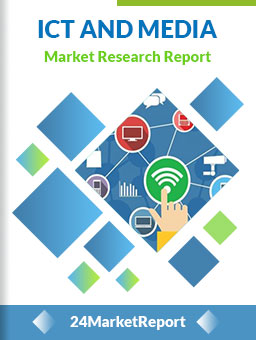
Download FREE Report Sample
Download Free sampleMARKET INSIGHTS
Global Medical Practice Management Platform market size was valued at USD 669 million in 2024. The market is projected to grow from USD 729 million in 2025 to USD 1,184 million by 2032, exhibiting a CAGR of 8.7% during the forecast period.
Medical Practice Management Platforms are comprehensive software solutions designed to streamline administrative workflows in healthcare settings. These systems integrate critical functions including appointment scheduling, electronic health records (EHR) management, medical billing, patient communication, and regulatory compliance reporting. The platforms serve as digital backbones for clinics, hospitals, and private practices, enabling efficient coordination between clinical and administrative operations.
The market growth is driven by increasing healthcare digitization efforts globally, with cloud-based solutions gaining particular traction due to their scalability and remote access capabilities. Recent industry developments highlight strategic partnerships, such as the integration of artificial intelligence for automated coding and revenue cycle management. Leading players including Epic Systems, Cerner Corporation, and AthenaHealth continue to dominate the competitive landscape, collectively holding over 40% market share as of 2024.
Rising Demand for Streamlined Healthcare Operations to Accelerate Market Growth
The global medical practice management platform market is experiencing significant growth due to the increasing need for efficient healthcare administration. With healthcare providers facing mounting pressure to reduce operational costs while improving patient care, these platforms offer indispensable solutions. Recent data indicates that practices using management software reduce administrative costs by an average of 30% while improving patient throughput by 25%. The shift toward value-based care models further intensifies this demand, as providers seek tools to maximize reimbursement efficiency and minimize claim denials, which currently account for approximately 5-10% of total claims.
Integration with EHR Systems Creating Synergistic Growth Opportunities
To know more about market statistics, Download a FREE Sample copy
Interoperability between practice management systems and electronic health records (EHR) is becoming a critical driver in the market. Over 85% of office-based physicians now use EHR systems, creating a natural ecosystem for integrated practice management solutions. This compatibility allows for seamless data flow between clinical and administrative functions, reducing duplicate data entry errors that previously accounted for nearly 15% of billing inaccuracies. The growing emphasis on population health management, requiring both clinical and administrative data integration, further propels adoption rates among multi-specialty practices and accountable care organizations.
Regulatory Compliance Requirements Fueling Platform Adoption
Evolving healthcare regulations continue to drive demand for sophisticated practice management solutions. The transition to ICD-10 coding increased coding complexity by nearly fivefold, making manual processes unsustainable. Current platforms incorporate automated coding suggestions that improve accuracy rates above 95%, compared to 65-70% with manual coding. Additionally, platforms with built-in compliance tracking help practices navigate complex requirements such as HIPAA security rules and MACRA quality reporting, where penalties for non-compliance can exceed $50,000 per violation. This regulatory pressure makes comprehensive management systems essential rather than optional for medical practices of all sizes.
High Implementation Costs Create Barriers for Small Practices
While medical practice management platforms offer significant long-term benefits, upfront costs present a substantial barrier to adoption. Initial setup costs, including software licensing, hardware upgrades, and staff training, typically range between $10,000 to $50,000 for small to mid-sized practices. These expenses prove particularly challenging for independent practices where operating margins often fall below 5%. Additionally, ongoing maintenance and subscription fees, averaging 15-20% of the initial cost annually, create financial pressure that deters some providers from upgrading outdated systems.
Data Security Concerns Impede Cloud-Based Adoption Rates
Despite the advantages of cloud-based solutions, security concerns continue to restrain market growth. Healthcare data breaches have increased by over 55% in recent years, with the average cost per breached record exceeding $400. While cloud providers implement robust security measures, nearly 60% of healthcare IT decision-makers express hesitation about migrating sensitive patient and financial data off-premises. This apprehension is particularly pronounced in specialty practices dealing with sensitive health information, where the perceived risk of cloud vulnerabilities outweighs the operational benefits for many providers.
Workforce Resistance to Technological Change Slows Implementation
The healthcare sector faces unique challenges in workforce adoption of new technologies. Clinical staff accustomed to legacy systems often resist transitioning to modern platforms, with practice surveys indicating that 40-50% of implementation projects encounter significant staff pushback. The learning curve associated with comprehensive platforms can temporarily reduce productivity by 20-30% during transition periods. Furthermore, the industry-wide shortage of healthcare IT professionals makes it difficult for practices to secure the technical support needed for smooth system integrations and staff training.
Artificial Intelligence Integration Opens New Frontiers for Market Expansion
The incorporation of AI capabilities presents transformative opportunities for practice management platforms. Machine learning algorithms can now predict cash flow patterns with 85% accuracy and automatically identify optimal scheduling patterns that reduce patient wait times by 30%. Natural language processing enables automated insurance eligibility verification, reducing front-desk workload by 15-20 hours per week. As these technologies mature, platforms that successfully integrate predictive analytics and intelligent automation will gain significant competitive advantage in an increasingly crowded market.
Telehealth Integration Creates Comprehensive Practice Ecosystems
The explosive growth of telehealth, which maintains 38 times higher utilization than pre-pandemic levels, creates compelling opportunities for platform developers. Integrated solutions that combine traditional practice management with telehealth scheduling, documentation, and billing functionalities are experiencing 60% faster adoption rates than standalone systems. This convergence addresses critical pain points in telehealth reimbursement, where incomplete documentation leads to nearly 25% of claims being underpaid or denied. Platforms that bridge this operational gap will capture significant market share as hybrid care models become standard practice.
Emerging Markets Offer Untapped Growth Potential
While North America currently dominates the market, emerging economies present substantial expansion opportunities. Healthcare digitization initiatives in Asia-Pacific and Latin America are driving 25-30% annual growth in practice management software adoption. Localized solutions addressing regional billing requirements, insurance structures, and regulatory frameworks could capture this growing demand. Furthermore, mobile-first platforms designed for clinics with limited infrastructure could serve the 40% of global healthcare providers still using entirely paper-based systems.
Interoperability Gaps Between Competing Systems Persist
Despite industry standards like HL7 and FHIR, seamless data exchange between different practice management systems remains elusive. Integration projects between disparate systems fail at a rate of 30-40%, often due to incompatible data structures or proprietary formats. These interoperability challenges create operational silos that limit the effectiveness of management platforms, particularly in multi-specialty groups using different systems. The resulting inefficiencies cost the healthcare industry an estimated $30 billion annually in redundant tests and administrative waste.
Rapid Technological Advancements Create Vendor Sustainability Concerns
The breakneck pace of innovation in healthcare IT creates challenges for both vendors and providers. Platform lifecycles have shortened from 7-10 years to just 3-5 years, forcing practices into frequent upgrade cycles. Smaller vendors struggle to maintain the R&D budgets needed to keep pace, resulting in market consolidation where 40% of platforms are acquired or discontinued within five years of launch. This volatility creates uncertainty for healthcare providers making long-term technology investments in an rapidly evolving landscape.
Customization Needs Vary Widely Across Specialties
One-size-fits-all solutions often fail to address specialty-specific workflows, creating implementation challenges. Ophthalmology practices, for instance, require distinct coding and billing processes compared to orthopedic clinics, with specialty-specific rules affecting nearly 35% of transactions. Platform vendors face the difficult balance between maintaining standardized code bases and providing the deep customization demanded by different medical specialties. Those who successfully develop flexible architecture with specialty-specific modules will gain significant advantage in this fragmented market.
Cloud-based Platforms Dominate Due to Scalability and Remote Access Advantages
The market is segmented based on type into:
Cloud-based
Subtypes: SaaS solutions, hybrid cloud deployments
On-premises
Patient Records Management Leads With Digital Transformation in Healthcare
The market is segmented based on application into:
Scheduling
Billing
Patient Records (EMR/EHR)
Patient Portal
Other administrative functions
Small and Medium Practices Show Highest Adoption Rates
The market is segmented based on practice size into:
Solo practitioners
Small practices (2-10 providers)
Medium practices (11-50 providers)
Large practices (50+ providers)
Subscription-based Models Gain Traction in Modern Healthcare IT
The market is segmented based on deployment model into:
Licensed software (perpetual)
Subscription-based
Pay-per-use
Strategic Alliances and Product Innovation Drive Market Leadership
The global Medical Practice Management Platform market demonstrates a highly competitive landscape characterized by a mix of established healthcare IT leaders and agile software innovators. With the market projected to grow at 8.7% CAGR through 2032, companies are aggressively investing in AI integration, interoperability solutions, and value-based care functionalities to maintain competitive advantage.
Athenahealth and Epic Systems currently dominate the market, collectively holding approximately 32% market share in 2024. Their leadership stems from comprehensive EHR-PMS integrations and strong penetration in large hospital networks. Athenahealth's recently launched "AthenaOne" suite has shown particular success among medium-sized practices, combining revenue cycle management with population health tools.
Meanwhile, Cerner Corporation (now part of Oracle) and NextGen Healthcare are making significant strides through strategic acquisitions. Cerner's integration with Oracle's cloud infrastructure has notably improved its platform's analytics capabilities, while NextGen's acquisition of Medfusion strengthened its patient engagement solutions.
The market also sees intense competition from specialized players like SimplePractice (focusing on behavioral health) and CareCloud (targeting multi-location practices). These companies are gaining traction through vertical-specific customization and flexible pricing models that appeal to smaller practices.
Athenahealth (U.S.)
Epic Systems (U.S.)
Cerner Corporation (Oracle) (U.S.)
NextGen Healthcare (U.S.)
Allscripts (U.S.)
eClinicalWorks (U.S.)
Greenway Health (U.S.)
McKesson Corporation (U.S.)
SimplePractice (U.S.)
CareCloud (U.S.)
AdvancedMD (U.S.)
Aprima Medical Software (U.S.)
Recent industry movements underscore the importance of technological differentiation. Over 60% of platform providers now offer AI-powered scheduling assistants, while 45% have incorporated real-time eligibility verification tools. This rapid feature evolution creates both opportunities and challenges for vendors, as healthcare providers increasingly demand all-in-one solutions that reduce administrative burdens.
The competitive intensity is further amplified by new entrants focusing on niche specialties. Companies like Meditab (ophthalmology-focused PMS) and Adroit Infosystems (emerging markets specialist) are carving out profitable segments, forcing incumbents to reconsider their one-size-fits-all approaches.
The shift toward cloud-based practice management platforms is transforming healthcare administration, with adoption rates increasing by approximately 22% annually since 2020. These solutions offer real-time data accessibility, reduced infrastructure costs, and enhanced interoperability with electronic health record (EHR) systems. Recent advancements include AI-powered automation for appointment scheduling and revenue cycle management, which can reduce administrative workloads by 30-40% according to industry benchmarks. Furthermore, the integration of telehealth functionalities directly into practice management systems has become essential, with 76% of healthcare providers now prioritizing platforms that combine virtual care coordination with traditional practice management tools.
Regulatory Compliance Requirements
Evolving healthcare regulations such as the 21st Century Cures Act and HIPAA updates are compelling practices to invest in advanced management platforms. Modern solutions now incorporate automated compliance tracking that reduces audit risks by 45% while streamlining documentation processes. The growing emphasis on data security has also led to triple-digit growth in demand for platforms with built-in blockchain encryption for patient records, particularly in multi-location practice environments.
The healthcare industry's transition toward value-based care models is accelerating adoption of sophisticated analytics within practice management systems. Platforms now increasingly incorporate predictive analytics modules that help providers identify high-risk patients and optimize resource allocation. Recent data shows practices using these advanced features achieve 15-20% higher patient retention rates while reducing unnecessary visits by 12%. The integration of population health management tools directly into workflow systems represents the next frontier, with early adopters reporting 28% improvements in care coordination metrics.
North America
North America dominates the Medical Practice Management Platform market, driven by stringent healthcare regulations such as HIPAA compliance mandates, high digital adoption rates, and a strong emphasis on patient data security. The U.S. accounts for over 85% of the regional market share, fueled by substantial healthcare IT investments—estimated at $89 billion in 2024—and widespread EHR integration. Canada follows with progressive telemedicine policies accelerating cloud-based platform adoption. While large hospital systems favor enterprise solutions like Epic Systems, smaller practices increasingly adopt scalable options such as AthenaHealth due to cost efficiency.
Europe
Europe's market growth is propelled by GDPR compliance requirements and government-led digital health initiatives like the EU’s €810 million Digital Europe Programme. Germany and the U.K. lead in adoption, with 68% of clinics using certified platforms. However, fragmented reimbursement policies across member states create integration challenges. SaaS-based models are gaining traction in Scandinavia due to high internet penetration, while Southern Europe shows slower uptake because of budget constraints in public healthcare systems. Cross-border data sharing under the EHDS (European Health Data Space) framework presents future growth opportunities.
Asia-Pacific
The APAC region is experiencing the fastest CAGR (11.2%) driven by India's Ayushman Bharat digital mission and China's 14th Five-Year Plan healthcare IT investments. Japan and Australia demonstrate mature markets with high EHR penetration, whereas Southeast Asia shows demand for low-cost multilingual solutions. A unique hybrid model trend is emerging—combining local practice needs with global compliance standards. Though security concerns persist in price-sensitive markets, telehealth expansion post-pandemic has boosted platform demand, particularly in Indonesia and Philippines where physician-to-patient ratios remain low.
South America
Brazil dominates the regional market with 43% share, supported by ANS (National Health Agency) regulations mandating digital health records. Argentina and Chile show steady growth through public-private partnerships in hospital digitization projects. Economic instability, however, limits small practices' ability to upgrade from legacy systems. Vendors are addressing this through modular pricing and Portuguese/Spanish language support. The lack of interoperability standards between private and social healthcare systems remains a key restraint, though cross-platform API development shows promise.
Middle East & Africa
GCC countries, particularly UAE and Saudi Arabia, drive the MEA market through smart city healthcare integrations under Vision 2030 initiatives. Israel stands out with advanced military health tech applications. Africa presents untapped potential as mobile health solutions bridge infrastructure gaps—South Africa and Kenya lead in adoption through public health programs. Challenges include low physician tech literacy in rural areas and intermittent connectivity. However, partnerships like the African Union's Digital Health Strategy and donor-funded projects are gradually improving market accessibility for platform providers.
This market research report offers a holistic overview of global and regional markets for the forecast period 2025–2032. It presents accurate and actionable insights based on a blend of primary and secondary research.
✅ Market Overview
Global and regional market size (historical & forecast)
Growth trends and value/volume projections
✅ Segmentation Analysis
By product type or category
By application or usage area
By end-user industry
By distribution channel (if applicable)
✅ Regional Insights
North America, Europe, Asia-Pacific, Latin America, Middle East & Africa
Country-level data for key markets
✅ Competitive Landscape
Company profiles and market share analysis
Key strategies: M&A, partnerships, expansions
Product portfolio and pricing strategies
✅ Technology & Innovation
Emerging technologies and R&D trends
Automation, digitalization, sustainability initiatives
Impact of AI, IoT, or other disruptors (where applicable)
✅ Market Dynamics
Key drivers supporting market growth
Restraints and potential risk factors
Supply chain trends and challenges
✅ Opportunities & Recommendations
High-growth segments
Investment hotspots
Strategic suggestions for stakeholders
✅ Stakeholder Insights
Target audience includes manufacturers, suppliers, distributors, investors, regulators, and policymakers
-> Key players include AthenaHealth, Cerner Corporation, Epic Systems, Allscripts, NextGen Healthcare, eClinicalWorks, Greenway Health, McKesson Corporation, among others.
-> Key growth drivers include increasing healthcare digitization, regulatory mandates for electronic health records, rising demand for operational efficiency in medical practices, and growing adoption of cloud-based solutions.
-> North America currently leads the market, while Asia-Pacific is expected to witness the fastest growth due to expanding healthcare infrastructure.
-> Emerging trends include AI-powered automation, integrated telehealth capabilities, mobile practice management solutions, and increasing focus on data security and compliance.

Speak to our Custom Research Team and get the Custom Research in a budget
Custom ResearchFrequently Asked Questions ?
A license granted to one user. Rules or conditions might be applied for e.g. the use of electric files (PDFs) or printings, depending on product.
A license granted to multiple users.
A license granted to a single business site/establishment.
A license granted to all employees within organisation access to the product.
Upto Working 24 to 48 hrs
Upto 72 hrs max - Weekends and Public Holidays
Online Payments with PayPal and CCavenue
Wire Transfer/Bank Transfer
Hard Copy




 Industry Market Size
Industry Market Size SWOT Analysis
SWOT Analysis Industry Major Players
Industry Major Players Revenue Forecasts
Revenue Forecasts Historical and Forecast Growth
Historical and Forecast Growth Profitability Analysis
Profitability Analysis
























